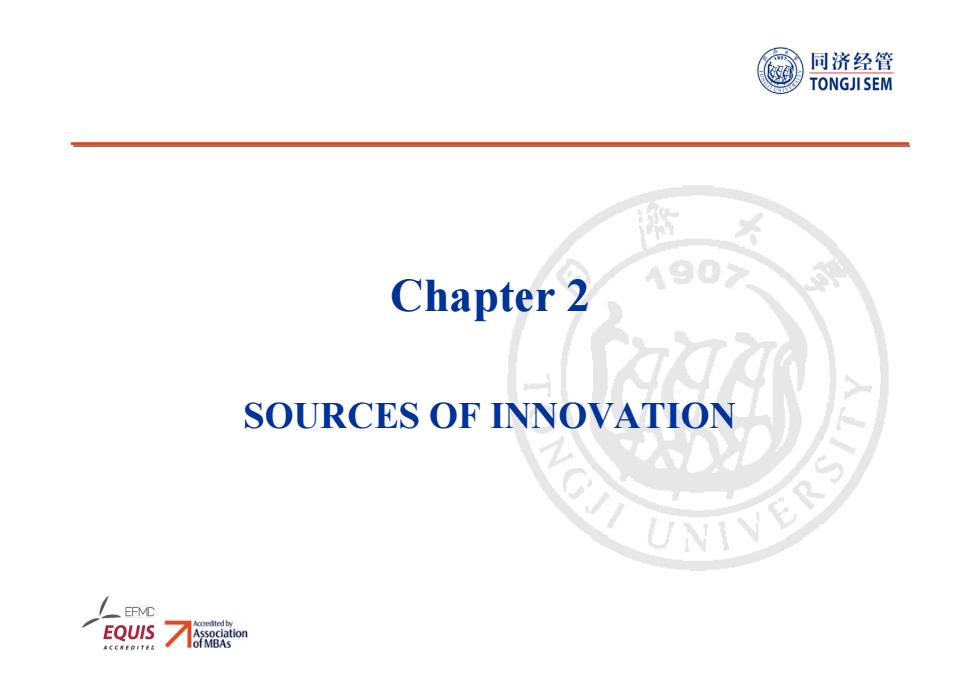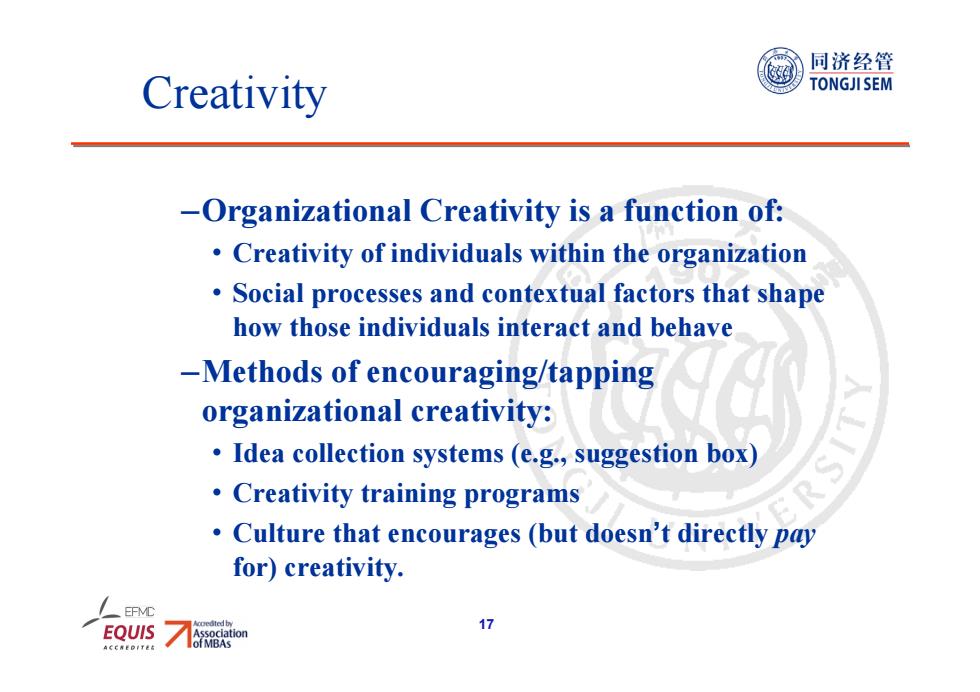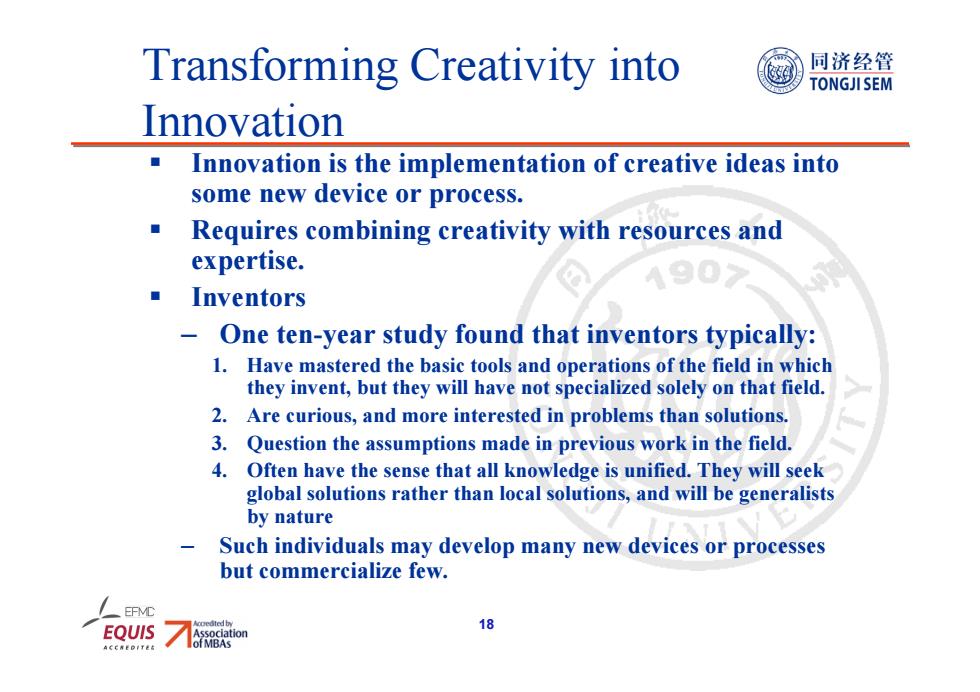
同济经管 TONGJI SEM 490 Chapter 2 SOURCES OF INNOVATION EFMC EQUIS
Chapter 2 SOURCES OF INNOVATION

同济经管 Overview TONGJI SEM -Innovation can arise from many different sources and the linkages between them. FIGURE 2.1 Sources of Innovation as a Firms System Individuals Universities Private Government- Nonprofits Funded Research EOUIS 15
15 Overview Innovation can arise from many different sources and the linkages between them

同济经管 Creativity TONGJI SEM -Creativity:The ability to produce work that is useful and novel. -Individual creativity is a function of: Intellectual abilities (e.g.,ability to articulate ideas) Knowledge (e.g.,understand field,but not wed to paradigms) Style of thinking (e.g.,choose to think in novel ways) Personality (e.g.,confidence in own capabilities) Motivation (e.g.,rely on intrinsic motivation) Environment (e.g.,support and rewards for creative ideas) EQUIS on 16
16 Creativity Creativity: The ability to produce work that is useful and novel. –Individual creativity is a function of: • Intellectual abilities (e.g., ability to articulate ideas) • Knowledge (e.g., understand field, but not wed to paradigms) • Style of thinking (e.g., choose to think in novel ways) • Personality (e.g., confidence in own capabilities) • Motivation (e.g., rely on intrinsic motivation) • Environment (e.g., support and rewards for creative ideas)

同济经管 Creativity TONGJI SEM -Organizational Creativity is a function of: Creativity of individuals within the organization Social processes and contextual factors that shape how those individuals interact and behave -Methods of encouraging/tapping organizational creativity: Idea collection systems (e.g.,suggestion box) Creativity training programs Culture that encourages(but doesn't directly pay for)creativity. EOUIS 11
17 Creativity –Organizational Creativity is a function of: • Creativity of individuals within the organization • Social processes and contextual factors that shape how those individuals interact and behave –Methods of encouraging/tapping organizational creativity: • Idea collection systems (e.g., suggestion box) • Creativity training programs • Culture that encourages (but doesn’t directly pay for) creativity

Transforming Creativity into 同济经管 TONGJI SEM Innovation Innovation is the implementation of creative ideas into some new device or process. ■ Requires combining creativity with resources and expertise. 490 ■Inventors One ten-year study found that inventors typically: 1.Have mastered the basic tools and operations of the field in which they invent,but they will have not specialized solely on that field. 2.Are curious,and more interested in problems than solutions. 3.Question the assumptions made in previous work in the field. 4.Often have the sense that all knowledge is unified.They will seek global solutions rather than local solutions,and will be generalists by nature Such individuals may develop many new devices or processes but commercialize few. EFMC EQUIS 18
18 Transforming Creativity into Innovation Innovation is the implementation of creative ideas into some new device or process. Requires combining creativity with resources and expertise. Inventors – One ten-year study found that inventors typically: 1. Have mastered the basic tools and operations of the field in which they invent, but they will have not specialized solely on that field. 2. Are curious, and more interested in problems than solutions. 3. Question the assumptions made in previous work in the field. 4. Often have the sense that all knowledge is unified. They will seek global solutions rather than local solutions, and will be generalists by nature – Such individuals may develop many new devices or processes but commercialize few